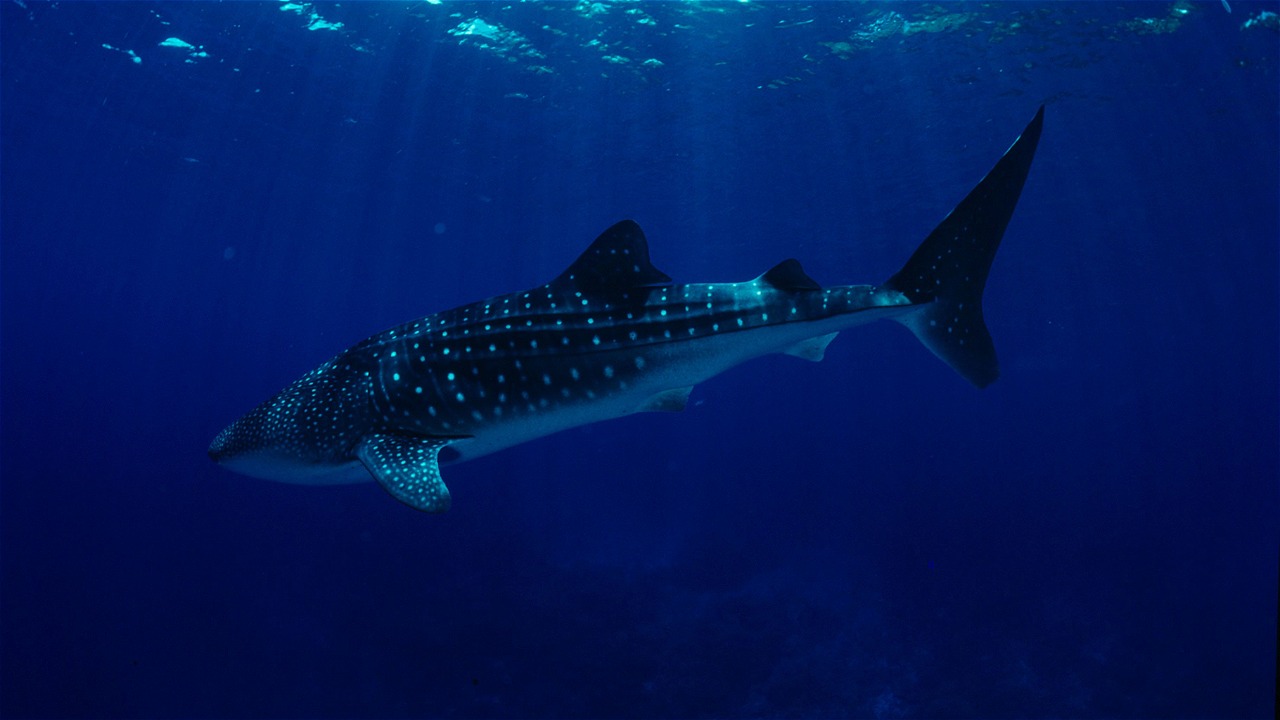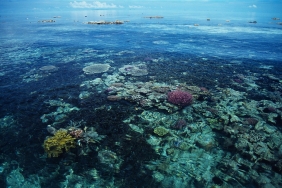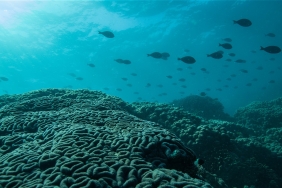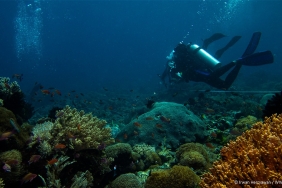KWATISORE, A FAVORITE PLACE FOR YOUNG WHALE SHARKS TO PLAY AND FEED
By: Evi Nurul Ihsan (Monitoring & Surveilance Officer Teluk Cenderawasih)
The Kwatisore waters within the Teluk Cenderawasih National Park (TNTC) are known as one of the locations for whale shark watching. In the last six years (2011-2016), there were 16,424 tourists who entered the TNTC area to interact with this giant fish. Based on data from the Cenderawasih Bay National Park Center (BBTNTC), this number has provided income to the state that is not derived from taxes amounting to Rp2,057,592,000.00.
Since 2011, WWF-Indonesia has been monitoring the appearance of whale sharks in the Kwatisore area, TNTC. Since then, WWF together with partners, such as the Teluk Cenderawasih National Park Center (BBTNTC), local government, local communities, universities, and Kali Lemon Resort have collected at least 10,556 photos, 606 whale shark occurrence data, and 135 different individuals.
Monitoring results show that most whale sharks that appear are relatively young with an average length of 4.4 meters. The presence of whale sharks in TNTC is dominated by 114 males, 4 females, and 17 individuals of unknown sex.
The pattern of whale shark occurrence in TNTC is related to bagan fishers and the presence or absence of puri fish in the bagan. Puri fish is believed to be an alternative food for whale sharks in Kwatisore, in addition to krill shrimp, zooplankton (crustaceans and copepods). Additional research that has been conducted based on routine whale shark monitoring also reinforces this hypothesis.
From the results of the composition of zooplankton in the waters of Kwatisore and its surroundings, it appears that the species composition of zooplankton in the waters of Kwatisore along 4 miles seaward from the coast is indeed dominated by crustaceans and copepods. Other factors associated with the growth and abundance of zooplankton in a body of water were also examined.
The results of the study from 10 points of whale shark occurrence locations with the highest frequency showed that chlorophyll-a concentrations in Kwatisore waters were quite high and occurred throughout the year. This strengthens the previous hypothesis and strengthens the results of research on the abundance of zooplankton species. Chlorophyll-a plays an important role in marine waters as an organic fertilizer and plays a major role in terms of primary productivity along with sunlight. High concentrations of chlorophyll-a coupled with sufficient sunlight will facilitate the process of photosynthesis in phytoplankton which is the main food of zooplankton.
Another hypothesis that arises is that whale sharks and puri fish have the same food preferences, namely zooplankton types of crustaceans and copepods. This is reinforced by whale shark occurrence data which is quite high and occurs throughout the year. In August 2017, the monitoring team encountered another whale shark identified as ID013, which last appeared in April 2015. ID013 first appeared in June 2012.
Based on the experience of the monitoring team in the field, which has continued to monitor whale sharks since 2012, the hypothesis boils down to two things. First, Kwatisore waters are the best place for young whale sharks to live. Secondly, in addition to the best place to live, Kwatisore waters also promise the daily food needs needed by these young whale sharks so that they can continue to survive and continue their offspring for the future.





